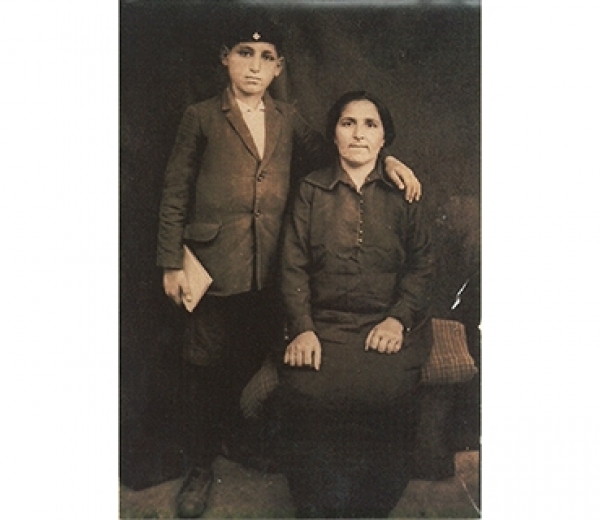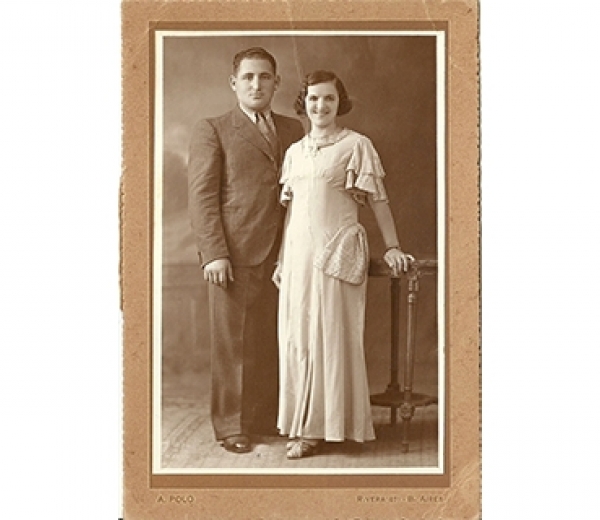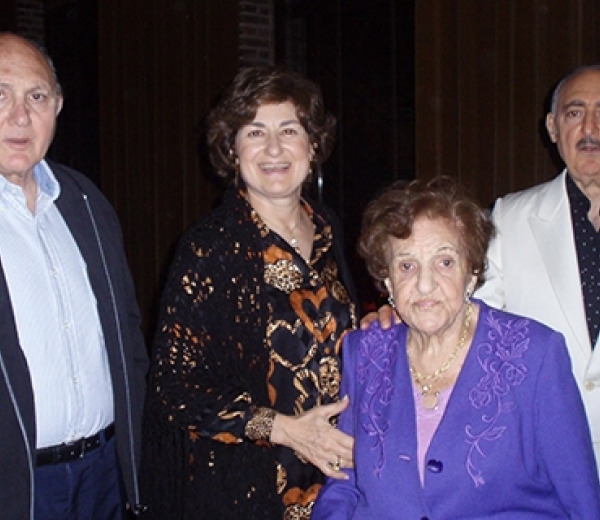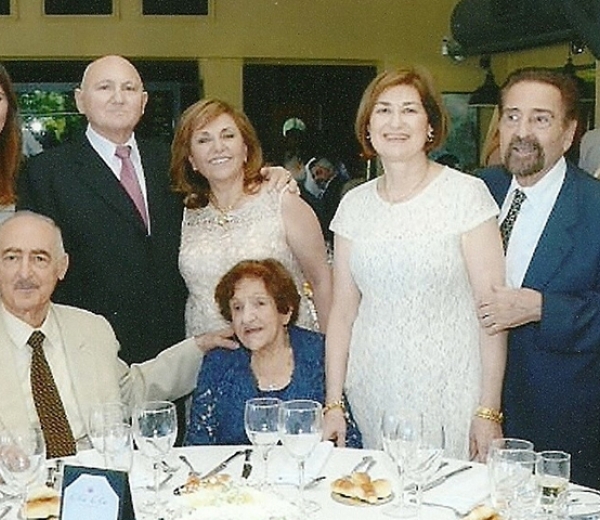Akrabian Siblings
But it was by a twist of fate that Luisa and Kevork met in Argentina.

|
Kevork Akrabian with his mother in Marash |
That was the start of what later became a large factory producing 200 pairs of shoes per day.

|
Luisa Naldjian and Kevork Akrabian on the day of their engagement |
Luisa Naldjian-Akrabian, one of the last remaining survivors of the Armenian Genocide, died in Buenos Aires in September 2015. In December 2014, on the occasion of her 100th birthday, Pope Francis sent her his blessings. She was a smiling woman who, despite her tragic past, raised her children with love. She and her husband passed their values and traditions on to them. The Akrabians greatly contributed to the growth of Armenian institutions in Argentina, as well as to the development of Armenia. Among many other projects, they participated in the construction of roads in Nagorno Karabakh.

|
Luisa Akrabian surrounded by her children Carlos, Cristina y Sergio (left to right) |
"We had role models. Our parents taught us by example, rather than with words," says Cristina, adding: "My father was a fervent fan of Argentina. When he arrived, he discovered a country that gave him everything. He said that Argentina was the best country in the world, and he was right. He instilled in us love for both Armenia and Argentina, and today we are very proud to be Argentinians of Armenian origin. There is nothing stopping us from being Armenian and Argentinian, we love both of our homelands equally."

